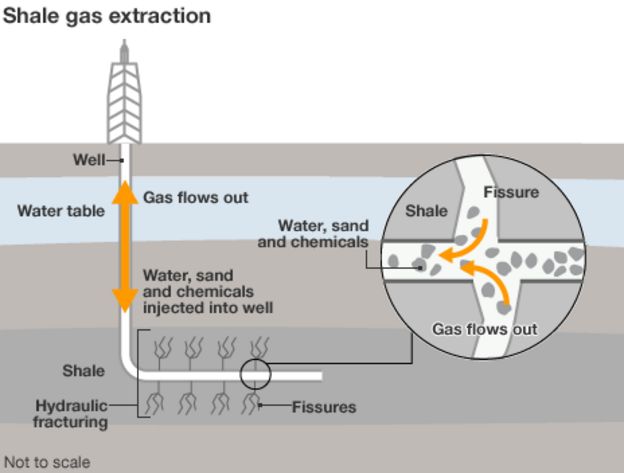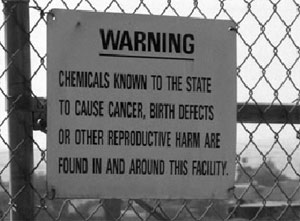As a student who majors in Applied Legal Studies, and who has already completed her Paralegal certification, I have been taught time and time again about ethics and the law. One of the major things that many people outside of the legal world find interesting, is that many lawyers often have to represent people they know are guilty, people they know are bad, and even companies that they know may not be the best; it simply is par of the job. We, as legal professionals, are taught to use the facts in our favor if the law may not be, and that is often what we must do when we know our clients are guilty. In this article, we hear of a lawyer who switched from defending one who is often seen as “the bad guy” (i.e. the corporations) to defending the good guy, the farmers.
Rob Bilott was an environmental defense attorney for many major American corporations; he defended many notable chemical companies in environmental cases made against them by plaintiff’s. His grandmother, Alma White, had called him one day to explain a situation that was brought to her attention: Wilbur Tennant of Parkersburg West Virginia had complained that his cows had been dying in large numbers. The DuPont chemical company was said to be the cause of his cows deaths; Tennant believed the company to be dumping their chemicals into the surrounding bodies of water. Tennant had attempted to get help in the local area, but DuPont had ties almost everywhere, making it impossible. White remembered her lawyer-of-a-grandson, and asked him to come help. Bilott, one who normally would represent companies like DuPont, decided to go check out the situation, even though it wasn’t his specialty; he was flooded with good childhood memories he had on his grandmothers farm in Parkersburg, which sparked his desire to try and help Tennant.
Tennant showed up to Bilott’s office in Cincinnati with a box full of video tapes and photographs; Tennant began to explaining the history of his cattle farm, how it was run by him and his four siblings when their father abandoned them. The farm spread roughly 600 acres, and had a total of 200 cattle roaming around. The farm would have stretched even longer if one of Wilbur Tennant’s brothers, Jim, did not sell 66 acres to the DuPont company in the early 1980’s for a landfill they were going to create for their factory. Jim Tennant and his wife Della needed money due to Jim being sick from various illnesses that could not be diagnosed; Jim was also an employee at the DuPont factory.
The Dry Run Creek ran trough the 66 acre plot of land that DuPont purchased from Jim Tennant, and the landfill was named Dry Run Landfill. The Dry Run Creek was also the same creek that ran down to where the Tennnat’s cattle grazed daily. Not much time had passed after the sale of the land to when Wilbur Tennnat’s cows began to act a little strange, he told Bilott. The cows used to be docile, allowing the farmers to milk them, pet them, and hug them, but now, they charged almost in anger towards the farmers when they were approached. After explaining the changed behavior of his cattle, Tennnant showed Bilott a video he had recorded: it showed the pasture with fields of green and the shallow Dry Run Creek nearby. But, there was also a giant mound of white froth gathered up in an elbow of the creek. Tennant then explained that he had taken a deer and a cow from the area where this forth was, and each had blood coming from their noses and mouths.
That same video then goes on to show a big pipe that dispenses green, frothy liquid into the creek. In disgust, Tennant says to Billot that ‘this is what they expect a man’s cows to drink on his own property.” and states that something must be done. Further into the video, we are presented with a malnourished, sick, cow with patches of hair missing from its coat. Tennant suggested kidney failure in the cow, which would have caused it to look as such. Tennant also captured one of his dead cows on the video, in the snow, with fluorescent blue eyes. You can hear Tennant stating in the video: ‘‘one hundred fifty-three of these animals I’ve lost on this farm, every veterinarian that I’ve called in Parkersburg, they will not return my phone calls or they don’t want to get involved. Since they don’t want to get involved, I’ll have to dissect this thing myself. … I’m going to start at this head.’’ the video then sows Tennant doing just that, dissecting the cows head. In dissecting all different organs of the cow, Tennnat notices large amounts of strange discoloration within its organs, and its teeth are blackened.
After seeing the video and talking with Tennant, Bilott studies the photographs and videos much, much longer. The article goes on to say that Bilott “saw cows with stringy tails, malformed hooves, giant lesions protruding from their hides and red, receded eyes; cows suffering constant diarrhea, slobbering white slime the consistency of toothpaste, staggering bowlegged like drunks.” These images greatly disturbed Bilott; he decided that something awful was going on, and that it needed to be taken care of. Almost immediately, under the decision that it was simply the right thing to do, Bilott decided to take Wilbur Tennant’s case.
As a lawyer at Taft, Bilott became an expert on working with clients to get them to comply with new environmental regulations that Congress and the Environmental Protection Agency (E.P.A.) had put in place in the recent years. Many of the chemical companies that Bilott worked with were used to dumping extremely hazardous waste into water areas long before these regulations became so strict. Taft was a bit shaky on letting Bilott take the Tennnant case; they feared it would seem strange to take a plaintiff’s side versus a corporations side- they would be suing a corporation rather than defending them. Bilott was excited to finally use his knowledge of the law for those he thought truly needed it.
In the Southern District of West Virginia in 1999, Bilott filed a federal suit against DuPont. Bernard Riley, DuPont’s in-house lawyer, said that they would investigate the property and animals with the E.P.A.; DuPont and the E.P.A. each provided three of their personally selected veterinarians to examine some of Tennant’s cows. Their studies found DuPont to not be responsible for the cows poor health, instead, it pointed blame on the Tennant family, stating that they “did not know how to raise cattle.” The Tennants began to suffer for these acuusations both financially and socially; much of Parkersburg was employed by DuPont, and many people began to ignore/ostracize the Tennant’s for bringing suit against DuPont. The Tennant’s had to change churches 4 times, and many people often said they weren’t aloud to talk to the Tennant’s.
Bilott discovered something: a letter that DuPont had wrote to the E.P.A explaining an unknown chemical called “PFOA.” As experienced as Bilott was in working with chemical companies, he had never heard of PFOA. A chemical specialist that Bilott had been using to help him had mentioned that he had once heard of a chemical with a similar name: PFOS, which was similar to soap. Bilott later discovered that PFOA was an abbreviation for perfluorooctanoic acid. DuPont had refused to tell Bilott anything about their use of the perfluorooctanoic acid, and in 2000, Bilott obtained a court order requiring them to do so. Within days of the court order being issued, the article states that “dozens of boxes containing thousands of unorganized documents began to arrive at Taft’s headquarters: private internal correspondence, medical and health reports and confidential studies conducted by DuPont scientists. There were more than 110,000 pages in all, some half a century old.” Bilott had his work cut out for him, and he began to dig into each document.
Through his research of the documents, Bilott discovered that DuPont had been using the perfluorooctanoic acid since 1951, and had known all along that it was extremely harmful. But why were they using this harmful chemical? The answer: to create Teflon. In order to dispose of the chemical, it needs to be set on fire or disposed of by chemical waste facilities; the chemical was not to be disposed of in waterways or sewers. The company had been dumping the perfluorooctanoic acid waste into the Ohio River and “digestion ponds” where it was absorbed into the ground. More than 100,000 people in the towns of Parkersburg, Vienna, Little Hocking and Lubeck were being supplied with perfluorooctanoic acid contaminated drinking water. 3M, the company that had created perfluorooctanoic acid, had been doing medical studies of the chemical for over 4 decades, along with DuPont.
Through experiementation and research, in 1961, DePont discovered that perfluorooctanoic acid greatly enlarged the livers of rats and rabbits. In the early 1970’s they also discovered that many of their factory workers in the Washington Works factory had high levels of perfluorooctanoic acid in their blood; they did not tell the E.P.A.. The article then goes on to state that “in 1981, 3M found that ingestion of the substance caused birth defects in rats. DuPont tested the children of pregnant employees in their Teflon division. Of seven births, two had eye defects. DuPont did not make this information public.” Throughout the following years, DuPont discovered high levels of perfluorooctanoic acid in the local drinking water, but did not make this information public. The article states that by 1991, “DuPont understood that PFOA caused cancerous testicular, pancreatic and liver tumors in lab animals. One laboratory study suggested possible DNA damage from PFOA exposure, and a study of workers linked exposure with prostate cancer.”
The DuPont company decided that it needed a new place to begin dumping the PFOA: the large 66 acre plot of land bought from Jim Tennant, one of their employees. That is when they begin to use the Dry Run Landfill, where they have dumped almost 7,100 tons of PFOA since 1990. The scientists at DuPont knew that the landfill would be dumping some of the PFOA into the Dry Run Creek where the Tennant’s cows were grazing near. The scientists decided to test the water, where they found extremely high levels of the chemical. They did not tell the Tennant family.
In 2000, Bilott had a conversation with DuPont’s lawyer once more, stating that he new exactly what was going on. Bilott was not satisfied with just helping out the Tennants; he knew that this PFOA was in thousands of homes drinking water, and he wondered what it may be doing to them.
Bilott composed a 927 page brief and sent it directly to the E.P.A. in 2001, which greatly scared DuPont. This brief not only scared DuPont, but the thousands of other companies using similar chemicals in their products and disposing them into the world without public knowledge. In 2005, DuPont reached a $16.5 million settlement with the E.P.A.. Joseph Kiger had later came to Bilott for help: he relieved a letter on Halloween night stating that levels of PFOA had been found in his drinking water, but that it was not a health risk. The E.P.A. began an investigation into PFOA, and found that it could pose extreme health risks to anyone exposed to in through water, air, or even cooking with Teflon pans. The srticle the goes on to read that “Bilott’s strategy appeared to have worked. In September 2004, DuPont decided to settle the class-action suit. It agreed to install filtration plants in the six affected water districts if they wanted them and pay a cash award of $70 million. It would fund a scientific study to determine whether there was a ‘‘probable link’’ — a term that delicately avoided any declaration of causation — between PFOA and any diseases. If such links existed, DuPont would pay for medical monitoring of the affected group in perpetuity. Until the scientific study came back with its results, class members were forbidden from filing personal-injury suits against DuPont.”
Many people in West Virginia began to send their blood off to labs to be tested for PFOA levels in their blood; in exchange, they received $400. Many people began to get unsettled a how long it was taking for the blood to be tested; people were dying of cancer, one of those people was Wilbur Tennant’s wife, and Wilbur himself had passed away of a heart attack, but also had been suffering from cancer. Bilott was getting distressed that he could not help these people in a timely manner.
Bilott himself began to change; in 2010, he began to have blurry vision, numbed arms, and he had difficulty dressing himself. His added stress form the case did not help as well. The article states that “the attacks recurred periodically, bringing blurry vision, slurred speech and difficulty moving one side of his body. They struck suddenly, without warning, and their effects lasted days. The doctors asked whether he was under heightened stress at work. ‘‘Nothing different than normal,’’ Bilott told them. ‘‘Nothing it hadn’t been for years.”” Doctors prescribed him some medication that helped alleviate the symptoms, but they still did not have a diagnosis for what was wrong with him.
After a long a grueling 7 years, in 2011, the scientists began to release the information they had found from the blood donations of West Virginian residents. They discovered that the PFOA chemical could be loosely linked to: “kidney cancer, testicular cancer, thyroid disease, high cholesterol, pre-eclampsia and ulcerative colitis.” 3,535 plaintiffs have filed personal-injury lawsuits against DuPont since October of 2015.
My family and I had used Teflon pans in the past, and we used to see flakes of the Teflon come off into our food, so we switched to using cast iron pans. We made the switch mainly because we thought the Teflon pans were cheap, and they didn’t last very long. I wish I could say it is because we knew about PFOA, unfortunately, that is not the case. At least we have switched, though! I wish more people knew about this….

The winding road to one of the Tennant’s farms.

DuPont’s logo: “DuPont: The miracles of science.”
More like, “DuPont: The miracles of poisoning thousands of people and getting away with it for years.”

Amen, protesters.

Many cooking pans are being labeled with this nowadays to inform consumers that their pans are safe.























 \
\